The Hunt for Captain Kidd’s Treasure and The Enduring Mystery of Oak Island
Any good mystery demands an answer; the best mysteries never give them up. For over 225 years, Oak Island has held its secrets and has unceasingly thwarted those who have tried to expose them. That hasn't stopped countless treasure hunters from flocking to this small island off the coast of Nova Scotia to try their hand at unraveling it.
Mark Twain himself once wrote, "There comes a time in every rightly-constructed boy's life when he has a raging desire to go somewhere and dig for hidden treasure." And so, over the past centuries, many have come, including former president Franklin Delano Roosevelt, looking for adventure and treasure. Some say the search is cursed, and others, a fool's errand.
The Treasure
Early accounts of the treasure were passed along as oral history from one generation to the next until the mid-1800s, when it was finally committed to paper. Details within these reports vary, but the most accepted version states that beginning in 1795, sixteen-year-old Daniel McGinnis, out on a fishing expedition, noticed a mark in an old tree and a nearby depression in the ground. He concluded the scar was caused by a rope and tackle system used to lower something into the earth. Additional exploration revealed an ancient road built along the island's west side and other evidence of a prior settlement.
The following day McGinnis returned with two friends, Anthony Vaughan and John Smith, a few shovels and pickaxes. Once they began to dig, the boys discovered the mouth of a pit that was seven feet in diameter and had clay soil with pick marks. Further down, at ten feet deep, lay thick logs. The boys were ill-equipped to go further.
However, they returned years later with the help of an old resident named Simeon Lynds, who had believed the tales the boys had told, and work on the island resumed with more crew and better tools. While digging deeper, the team discovered platforms of thick oak logs every 10 feet. At 90 feet under the earth, the dig finally revealed its first significant clue- a stone inscribed with strange markings, none in the crew could decipher.
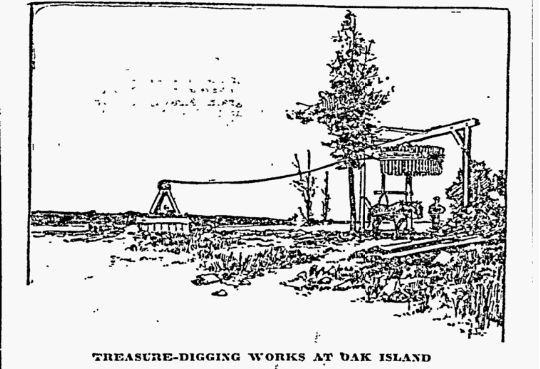
The original architects of the pit had built in a trap that the crew had inadvertently sprung. Additional attempts to pump the water out of the existing pit or create a new one alongside its predecessor failed, and the mission was abandoned.
It wasn't until 1865, in a twist of luck, a professor of languages at Dalhousie College, James Liechti, was able to decipher the stone. He stated that the inscription read, "Forty feet below two million pounds are buried." With that, interest in the hunt was renewed.
While there have been many theories about what lies beneath the ground on Oak Island, initial speculation favored a treasure left by the infamous Captain Kidd.
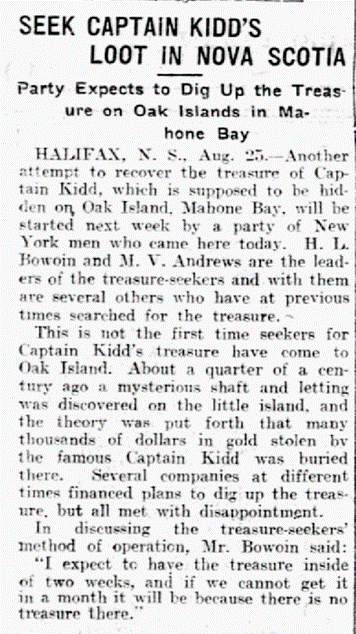
The Captain
Captain William "Robert" Kidd was a Scottish sea captain in the late 17th century who had settled in early New York City. Commissioned as a privateer, Kidd sailed and attacked ships engaged in piracy and England's enemy, the French, beginning in May 1696.
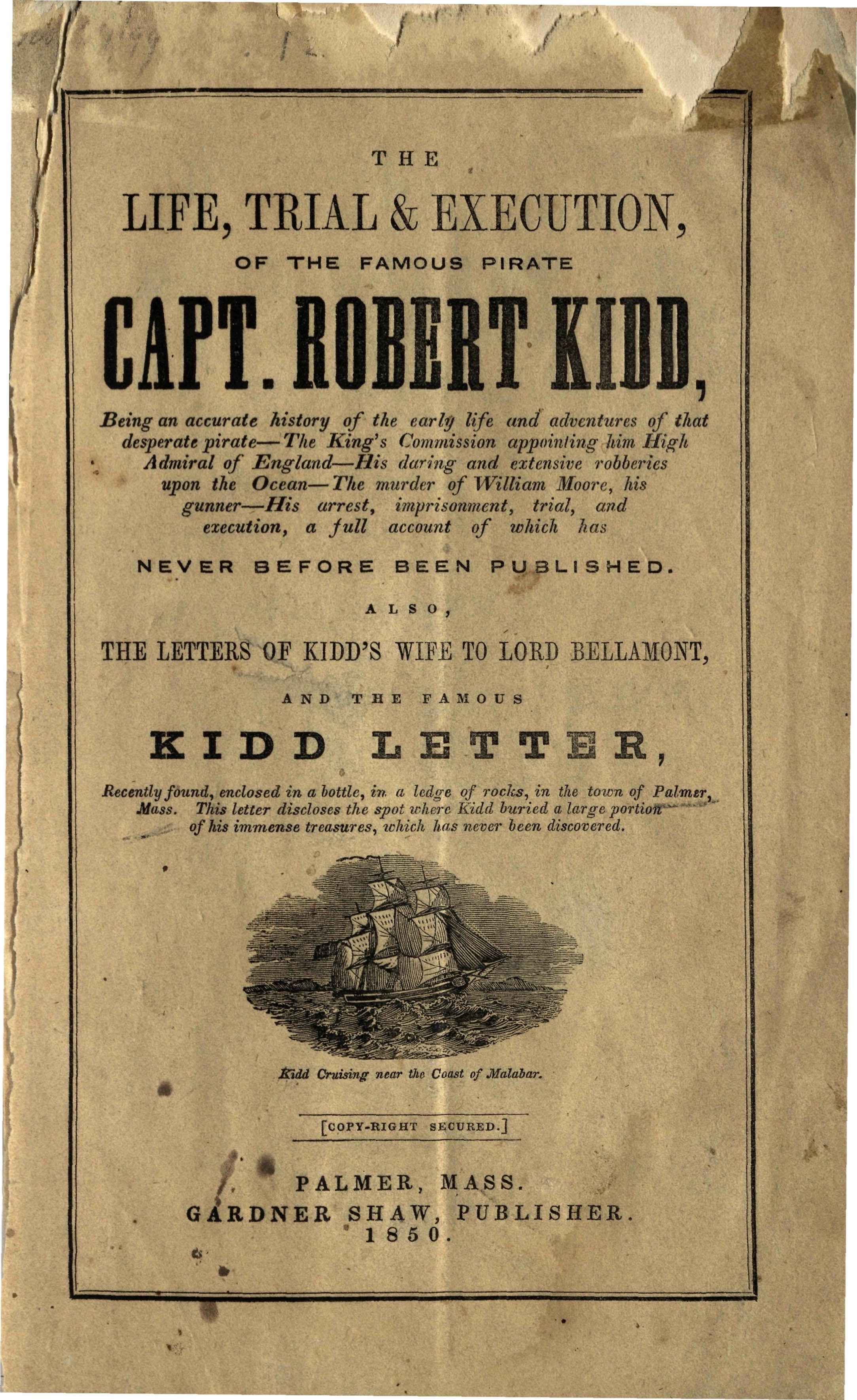
Captain Kidd's turn from privateer to pirate began when he set sail for Madagascar and the Indian Ocean, an epicenter for piracy at the time. Nonetheless, they came up empty-handed, as there were few ships around to take and thus no prizes to be had. This disappointment, coupled with an outbreak of cholera which killed roughly a third of his men, resulted in upheaval in the ranks. Further unsuccessful attacks triggered an argument in which Kidd killed a member of his company, William Moore, by hitting him in the head with a bucket.
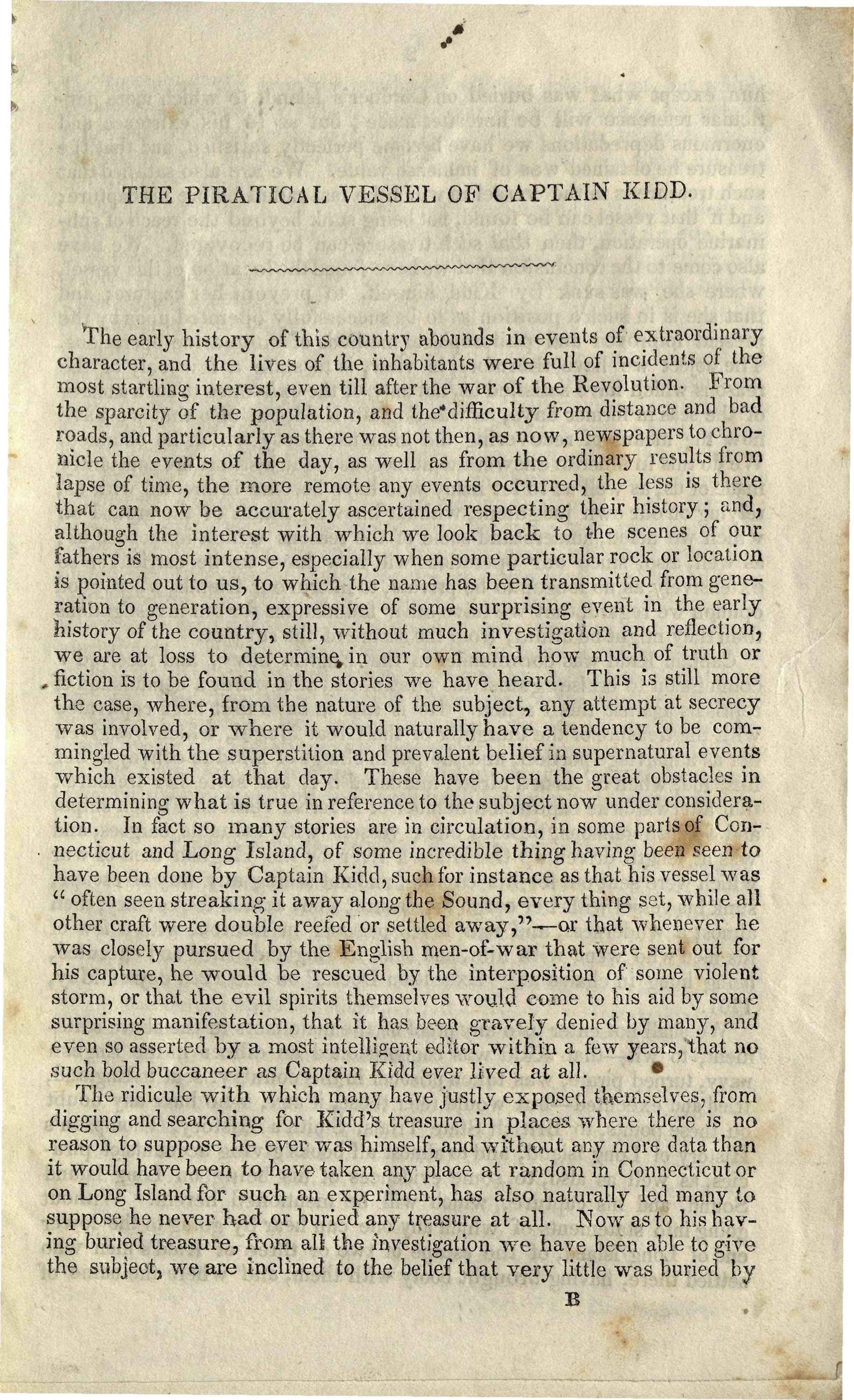
On January 30, 1698, Kidd's luck had changed, and he and his crew took their biggest prize, the 400-ton Quedagh Merchant. The Merchant held a haul of around 15,000 British pounds (over $2 million USD today).
Upon word of Kidd's piracy reaching the crown, Kidd decided to return to New York, where he had powerful and influential friends who he hoped would protect him. Before arriving back in New York, however, he buried his treasure on Gardiner's Island as a precaution. As it turned out, Kidd did not receive the protection he sought and was arrested upon arrival.

After divulging the location of his treasure, it was dug up and sent back to England as evidence that was used against him during his trial. Kidd was found guilty of piracy and the murder of Moore and hanged on May 23, 1701. Recent claims argue that Kidd wasn't a true pirate at all. The claims state that he was merely acting in respect to his job as a privateer and political opinion, not his acts is what had condemned him. Kidd himself proclaimed his innocence at his trial, stating,
My Lord, it is a very hard sentence. For my part, I am the innocentest [sic] person of them all, only I have been sworn against by perjured persons.

It is also said that Kidd, at the end of his life, insisted he had hidden another treasure. It is this claim has spurred treasure hunters ever since.
While there is little evidence to support the stories that Captain Kidd's treasure is buried on Oak Island, it was a popular theory in the early days of the hunt--and remains so today.
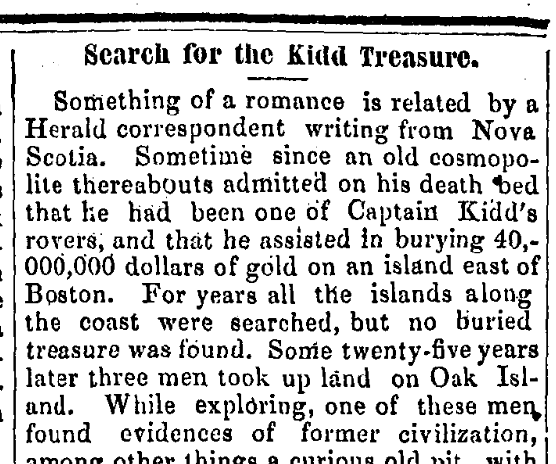
The theory had first begun with the story of an old sailor and soldier living on the coast of New England. He was considered a mysterious man in his community, as he was a recluse and often mute. On his death bed, he told the tale of his younger years, when he alleged to have been aboard the ship of Captain William Kidd, and that he had helped Kidd bury four million dollars in gold on "a secluded island east of Boston." He claimed that he dared never reveal his secret or claim the treasure for fear of being captured and charged with piracy.
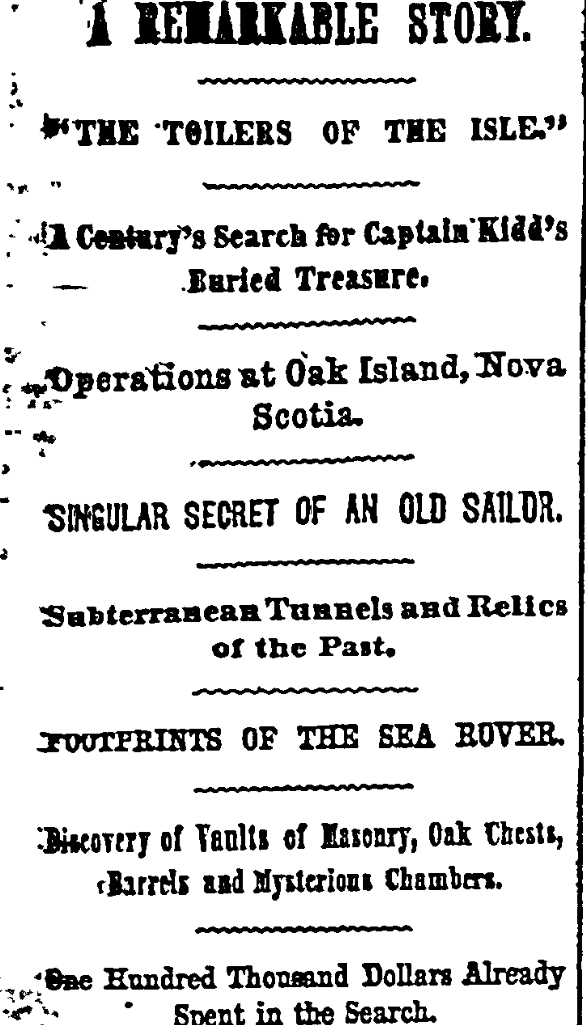
The Hunt
The men quickly noted the saltwater in the tunnels ebbed and flowed with the rising of the tides. With that observation, they theorized that the water was coming in from the ocean through subterranean passages. The theory concluded that the flood tunnels were coming from Smith's Cove, the direction in which early expeditions dug the first pits. This was a popular belief that continues to be studied today. Additionally, as early as 1887, the idea of setting off dynamite on the island to avoid the flood tunnels began to be considered.

By the mid-1920s, over a half dozen different organized attempts had failed to produce Kidd's treasure. These attempts came at both a financial and human cost: over $100,000 ($1.5 million today) spent and two lives lost. To date, there have been at least six deaths and millions of dollars spent to hunt the treasure.
The search for Captain Kidd's treasure on Oak Island continues today as the Lagina brothers document search efforts in the wildly popular History Channel reality series, "The Curse of Oak Island." As time has passed, more theories have been considered about who brought the treasure to the island and what it could be. These have included tales of the Knights Templar, the Crown jewels of France, and even Shakespeare/ Francis Bacon manuscripts.
Many treasure hunters continue to state that it is not the monetary value of the treasure which drives them to keep going, but the historical significance and the quest for answers to the ultimate mystery. Like Jack Sparrow said in Pirates of the Caribbean, "Not all treasure's silver and gold, mate."



